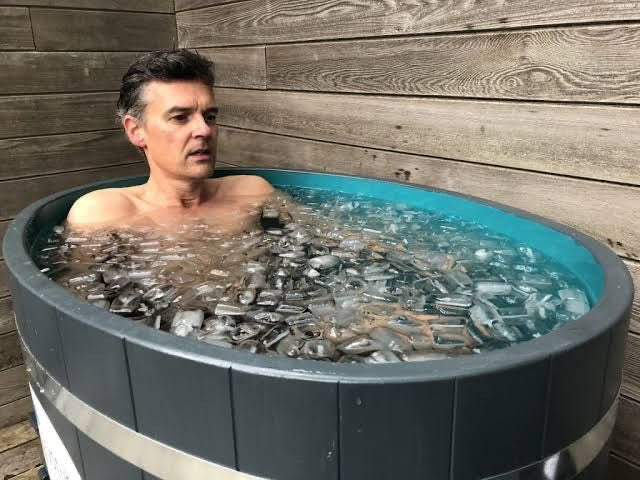Ever wondered if your Cold Plunge should feel like an Ice Bath Tub or just a chilly dip?
Short answer: Aim for 10–15 °C in your Cold Plunge Tub for best results!
Read on to find out why this temp hits the sweet spot for recovery, safety, and real health benefits.

2. Understanding Ideal Cold Plunge Temperatures and Durations
The temperature you choose shapes your entire cold plunge experience.
Too warm? You’ll miss the benefits.
Too cold? Risk of discomfort or even injury increases.
An ideal cold plunge temperature delivers recovery and mental benefits while staying safe.
Most users want a balance of shock, comfort, and effectiveness.
2.1 Recommended Temperature Ranges for Different Experience Levels

2.1.1 The "Sweet Spot" for Beginners: 50–60 °F (10–15 °C)
-
Ideal range for new users.
-
Manageable cold shock response.
-
Good for 1–2 minute sessions while adjusting.
Supports circulation, reduces muscle soreness, and builds tolerance safely.
2.1.2 Advanced Cold Exposure: Exploring Lower Temperatures (37–50 °F / 3–10 °C)
-
For experienced users seeking greater intensity.
-
Generally 8–10 °C, but as low as 3 °C with caution.
-
Stronger cold shock, requiring controlled breathing.
Offers heightened recovery effects and mental conditioning.
2.1.3 Identifying Dangerous Levels: When is Water Too Cold? (Below 40 °F / 4 °C)
-
Below ~4 °C significantly raises hypothermia risk.
-
Cold shock can cause hyperventilation or panic.
-
Only for brief exposure with expert supervision.
Prioritise safety by respecting your limits.
2.2 Optimal Immersion Times for Enhanced Benefits
2.2.1 Starting Short: Initial Durations for Novices (30–90 seconds)
-
Acclimation phase.
-
Focus on breathing and staying calm.
-
Avoids overwhelming the nervous system.
Builds confidence without undue stress.
2.2.2 Gradual Progression: Intermediate to Experienced Plunge Times (Up to 10 minutes)
-
Intermediate users: 2–5 minutes.
-
Advanced: 5–10 minutes in safe ranges.
-
Always exit if shivering becomes violent or numbness sets in.
Longer sessions amplify circulation and recovery benefits.
2.2.3 The "Minimum Effective Dose" and Weekly Cold Exposure Targets (e.g., 11 minutes per week)
-
Research suggests ~11 minutes/week offers benefits.
-
Can be spread over several short plunges.
-
Maintains health effects without overexposure.
Consistency trumps single long sessions.
3. Exploring the Benefits Across Various Temperatures and Times
Cold plunge therapy benefits go well beyond chilling out.
Your cold plunge tub can support health and wellbeing in many ways.
3.1 Key Physical and Mental Health Outcomes
3.1.1 Accelerating Muscle Recovery and Reducing Inflammation
-
Constricts blood vessels to limit swelling.
-
Speeds removal of waste products.
-
Ideal for post-exercise soreness.
3.1.2 Boosting Circulation and Metabolic Function
-
Cold causes vasoconstriction, then dilation.
-
Improves overall blood flow.
-
May support metabolism regulation.
3.1.3 Enhancing Mood, Focus, and Stress Resilience
-
Cold exposure can trigger endorphin release.
-
Builds mental toughness.
-
Helps regulate stress responses.
3.1.4 Supporting Immune System Health and Sleep Quality
-
May help regulate inflammation markers.
-
Promotes relaxation post-session.
-
Potential to support better sleep.
4. Safety, Acclimation, and Personalising Your Cold Plunge Journey
Safety always comes first with cold exposure.
Understanding risks and listening to your body are crucial.
4.1 Important Safety Considerations and Risk Mitigation
4.1.1 Understanding Cold Shock Response and Hypothermia Risks
-
Rapid breathing or gasping can occur.
-
Prolonged exposure risks hypothermia.
-
Enter slowly and monitor your body's signals.
4.1.2 Contraindications: Who Should Avoid Cold Plunges?
-
People with cardiovascular issues.
-
Those with Raynaud’s or severe asthma.
-
Always consult your GP if in doubt.
4.1.3 Signs of Overexposure and Safe Rewarming Practices
-
Violent shivering, confusion, numbness.
-
Always rewarm slowly.
-
Avoid sudden hot showers immediately after.
4.2 Tailoring Your Cold Plunge Practice
4.2.1 Gradual Acclimation Techniques: From Cold Showers to Ice Baths
-
Start with cold showers.
-
Short dips in 14–15 °C water.
-
Gradually reduce temp and increase time.
4.2.2 Factors Influencing Personal Tolerance (Body Fat, Health Conditions, Goals)
-
Leaner bodies may feel cold faster.
-
Health conditions can increase risk.
-
Define your goal: Recovery, mental training, general wellness.
4.2.3 The Importance of Listening to Your Body and Consulting Professionals
-
Respect personal limits.
-
Stop if you feel unsafe or unwell.
-
Seek professional advice if you have medical concerns.
5. Takeaways
-
Start safe: 10–15 °C is ideal for beginners.
-
Listen to your body: Don’t push past shivering or numbness.
-
Aim for consistency: About 11 minutes per week delivers real benefits.
-
Respect individual differences: Acclimation, health, and goals all matter.
-
Prioritise safety: Always rewarm slowly and consult a professional if needed.






